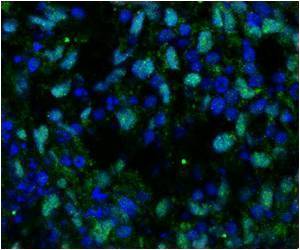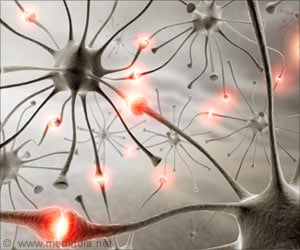At The Scripps Research Institute (TSRI), a team led by biologists has solved a long-standing mystery in neuroscience by identifying the mechanoreceptor protein that mediates the sense of touch in mammals.

"We can say with certainty that Piezo2 is the principal touch sensor in mammals," said Ardem Patapoutian, professor at TSRI and investigator with Howard Hughes Medical Institute.
Patapoutian and his colleagues report their discovery in the December 4, 2014 issue of Nature.
Unraveling the Clues
By the 1980s scientists have known the identity and sequence of the main protein photoreceptor that underlies the mammalian sense of sight. Since the early 1990s they have been identifying smell and taste receptors. But the mechanoreceptor protein that mediates the sense of touch has been more elusive. "It works in very few specialized cells and isn't abundant in those cells," Patapoutian said, "and at the start we didn't have many clues about what it would look like."
Four years ago, with the help of advanced genomics techniques, Patapoutian and members of his laboratory were able to identify two mechanically activated ion-channel proteins, Piezo1 and Piezo2, in mouse cells. Physical force, enough to distort a cell membrane in which one of these ion channels was embedded, could effectively switch the ion-channel from closed to open, allowing sodium or other positively charged electrolytes to flow inward. In a sensory nerve, that could trigger an electrical nerve impulse--thus tranducing physical force into a neural signal.
Last year, Patapoutian and colleagues reported that Piezo2 works as the touch sensor on Merkel cells, specialized cells that lie at touch-sensitive nerve terminals in the skin and augment the sense of touch in mice.
In the new study, the researchers extended these findings to the touch-sensitive nerve terminals themselves. These are often shaped to detect different types and directions of force, and for extra sensitivity may be attached to other force-responsive structures such as Merkel cells or hair follicles.
To start, the scientists made use of special mice, bred in the earlier Merkel cell study led by postdoctoral fellow Seung-Hyun Woo, which produce Piezo2 linked to a fluorescent protein. That allowed them to verify, via the resulting fluorescence, that Piezo2 is expressed in a broad range of "low-threshold mechanoreceptor" nerve terminals, which are embedded in both hairy and hairless areas of mouse skin.
The next step was to delete the Piezo2 gene from mice and observe whether the animals still responded normally to touch stimuli. But mice bred without Piezo2 all died at birth. Thus, postdoctoral fellow Sanjeev S. Ranade, lead author of the paper, had to accomplish the tricky task of developing a "conditional knockout" mouse line, in which the Piezo2 gene could be almost completely deleted from already-mature mice, and just from their dorsal root ganglia sensory neurons and Merkel cells.
Electrical tests of these neurons cultured from the mice, performed by staff scientist Adrienne Dubin, showed that they lost virtually all the responsiveness to mechanical stimuli that would be required for sensing ordinary light touch. Collaborator Gary Lewin and members of his laboratory at Berlin's Max-Delbrück Center for Molecular Medicine found the same profound loss of mechanosensitivity in special tests of intact skin nerves from the mice.
The mice lacking Piezo2 in their nerve endings and Merkel cells also showed a clear behavioral difference from normal mice. "Across a range of tests, we observed a dramatic reduction in their responsiveness to ordinary light touch stimuli," said Ranade.
Remarkably, these touch-insensitive mice remained responsive to skin-applied stimuli that are normally painful, such as heat, cold and pinching. Painful mechanical sensations such as pinching are thought to be mediated by high-threshold mechanoreceptor nerve terminals, which require more force to activate. "The functions of these high-threshold mechanoreceptor nerves seemed unaffected in the Piezo2 conditional knockout mice," Patapoutian said.
The finding suggests that the detection of light, innocuous touch--which we commonly think of as the "sense of touch"--is mediated principally by one set of nerve ends using piezo2 ion channels. By contrast, stronger, pain-causing touch sensations appear to be mediated by a less force-sensitive set of nerve ends with their own ion channel proteins, which have yet to be discovered.
Potential Applications
Patapoutian now plans to investigate how much "crosstalk" exists between these two mechanosensitive nerve systems. It is well known that chronic pain conditions can make even light touch stimuli feel painful. "This discovery now allows us to test the relationship between touch and pain," he said.
He and his colleagues also are investigating the role of Piezo2 in other parts of the body where it is expressed, including the lungs.
Source-Eurekalert
 MEDINDIA
MEDINDIA




 Email
Email






